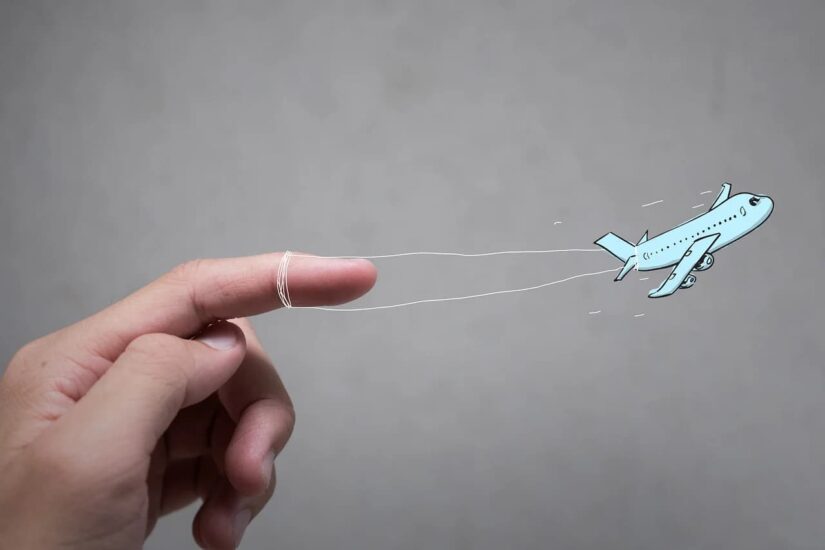Aviation has always captured the imagination of dreamers, designers, and innovators alike. The sight of an aircraft soaring through the sky stirs a sense of wonder that transcends cultural and geographical boundaries. This fascination with flight has not only driven technological advancements but has also inspired generations of artists and designers to push the boundaries of creativity.
In the words of Luisa Schwarz, a renowned aviation news writer, “Aviation is not just about reaching destinations; it’s about pushing the limits of what’s possible.” Schwarz’s deep understanding of aviation technology and her ability to contextualize its broader impact has made her a pivotal voice in connecting the dots between technological innovation and artistic expression. Her insights reveal how the marvels of aviation technology can serve as a profound source of inspiration for artists and designers around the globe.
The Aesthetic Appeal of Flight

From the elegant curves of a jetliner to the intricate details of a cockpit’s design, aviation offers a wealth of aesthetic inspiration. Airplanes themselves are masterpieces of engineering and design. Their forms, dictated by aerodynamic efficiency, often have a sculptural beauty that artists and designers find irresistible. Many have drawn parallels between the sleek lines of modern aircraft and the minimalist elegance of modernist art and architecture.
Take, for example, the iconic Concorde, which not only redefined air travel but also influenced design aesthetics across various industries. Its sleek, needle-like nose and delta wings inspired everything from furniture design to fashion. The Concorde became a symbol of futuristic elegance, embodying the perfect fusion of form and function.
Aviation in Contemporary Art
Aviation has also carved a niche in the world of contemporary art. Artists often use themes of flight to explore broader ideas of freedom, ambition, and the human condition. The imagery of planes and flight paths frequently appears in visual arts, installations, and even performance art.
One notable example is the work of Sarah Morris, an artist known for her geometric paintings and films. Her series inspired by airports and flight patterns captures the dynamic and interconnected nature of modern travel. Similarly, Wolfgang Tillmans, a renowned photographer, has explored themes of aviation in his work, creating evocative images that highlight the poetic aspects of flight.
Design Inspired by Aviation
Aviation has shaped design, from fashion to architecture. The principles of aerodynamics, lightweight materials, and functional aesthetics have inspired countless creations.
For instance, the Eames Lounge Chair, a timeless piece of furniture design, drew inspiration from the molded plywood techniques developed during World War II for constructing lightweight aircraft components. Similarly, the “Jet Age” of the 1950s and 1960s saw a surge in aviation-inspired fashion, with sleek, streamlined silhouettes and metallic fabrics becoming all the rage.
In architecture, the influence of aviation is evident in structures like airports, which often incorporate sweeping curves and expansive spaces to evoke the sensation of flight. Designers frequently look at the functionality and aesthetics of aircraft when creating these spaces, ensuring they not only serve their practical purpose but also inspire awe.
The Role of Technology
At the heart of aviation’s influence on art and design lies its technological advancements. Innovations in materials, engineering, and digital tools have opened new possibilities for creative expression. Lightweight composites used in aircraft construction have been adapted for use in sculpture and large-scale installations. Similarly, advancements in simulation technology, originally developed for flight training, are now being used by digital artists and designers to create immersive experiences.
One striking example is the use of augmented reality (AR) and virtual reality (VR) in design and art inspired by aviation. Artists and designers are using these tools to recreate the experience of flight, allowing audiences to explore the skies from entirely new perspectives. These technologies blur the line between the real and the virtual, creating opportunities for innovation that were unimaginable just a few decades ago.
Aviation as a Metaphor in Art
Beyond its technological and aesthetic influence, aviation serves as a powerful metaphor in art and design. The concept of flight often symbolizes freedom, exploration, and progress. Artists and designers frequently use aviation imagery to convey these themes, creating works that resonate deeply with audiences.
For example, sculptures of planes taking off or installations featuring wings often evoke a sense of aspiration and ambition. These works remind us of humanity’s relentless pursuit of the skies and the spirit of innovation that drives progress.
The Future of Aviation-Inspired Creativity
As aircraft technology continues to evolve, its impact on art and design is likely to grow. Emerging trends such as electric and autonomous aircraft, sustainable aviation solutions, and space tourism are opening up new realms of possibility. These advancements not only redefine the boundaries of aviation but also offer fresh inspiration for creative minds.
Designers are already exploring concepts like bio-inspired materials and sustainable practices, drawing from the innovations in aviation. Meanwhile, artists are finding ways to interpret the environmental and societal implications of these advancements, creating works that challenge us to think critically about the future of flight.
Conclusion
Aviation is more than a mode of transportation; it is a testament to human ingenuity and a boundless source of inspiration for art and design. From its aesthetic appeal to its technological innovations, aviation continues to fuel the creative imagination of artists and designers around the world.
By looking to the skies, we not only celebrate the achievements of aviation but also unlock new possibilities for creative expression, ensuring that the spirit of innovation continues to soar.
